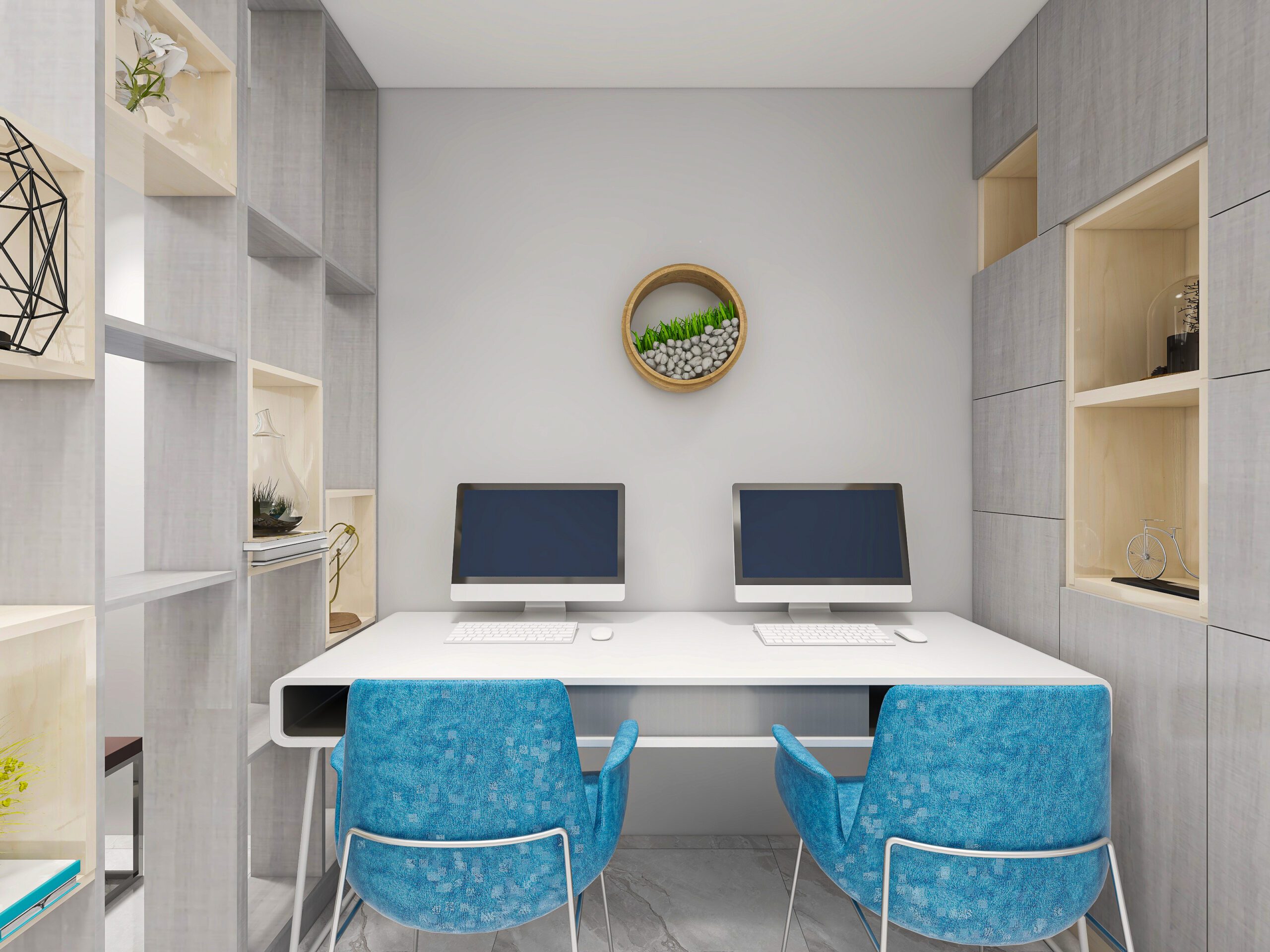This is the Trendiest Accessory in Your Closet
Storage is always near the top of the list for buyers who long for an organized home. While that hasn’t changed, a new priority has emerged since the pandemic led to a rise in working at home and attending school remotely: the need for office space.
A first-floor home office or flexible room has been included in many floor plans for decades, but the sudden need for multiple places to work and study encouraged many people to identify other places they could transform into workspace. Among the most popular solutions: converting a closet into an office or what some people dubbed a “cloffice.”
Home sellers typically want to showcase their residence to attract buyers and demonstrate how their space can meet their needs. This year, sellers may want to stage a bedroom as an office. If that’s not possible, quickly converting a closet to a functional office can be a good solution.
If you’re a buyer looking for more space now that you plan to work at home more often, you may assume you need one or more rooms designated as an office. If you can take a creative look at a home that has plenty of storage, you may find multiple options for work and studying.
Eight Tips for Converting a Closet to an Office
Your decisions about how to convert a closet into an office depends on multiple factors, such as whether you’re staging the house for sale, planning to use the space occasionally or making it your permanent home office. Consider the following tips in the context of your own home and lifestyle when designing an office in a closet.
Choose the right location. The size of your closet will dictate how much you can fit in the space, but don’t forget to consider what else is around the closet. If you work early in the morning or late at night, it may not make sense to convert a closet in your shared bedroom to an office. A hall closet or a storage closet off the kitchen may have the space you need, but it could be too noisy if this is an area of heavy traffic in your house.
Decide whether this is a multifunctional or single-use space. Ideally, you’d have a closet with doors that can be closed off to reduce noise and hide clutter. But sometimes there just isn’t enough space and you need to remove the closet doors completely. In other cases, a bedroom-sized walk-in closet is ideal because it is has more room and perhaps even a window.
Buy the right furnishings. Once you have the closet identified, you’ll need to measure it carefully to determine what size desk can fit in the space. Don’t forget to estimate how much elbow room you need and how much space you have for a desk chair. If you’ll rarely use this office, a simple stool or chair you can tuck under the desk will work. If you’re using it for long days, buy an ergonomically friendly chair.
Create a lighting plan. If you have a tiny desk, you may need to install an overhead light or wall sconces. Don’t forget to check your lighting for video conferencing, too. Either way, make sure you have an outlet or access to wiring to add more light.
Decorate with care. A closet office can be a fun place to experiment with a different style or pattern, but keep in mind that you want to be able to concentrate in the space. Some designers recommend choosing neutral colors to avoid distraction. If the closet is open to another room such as your bedroom, be sure the spaces complement each other.
Give yourself a view. Since most closets don’t have a window, you should think about what you’ll see when you turn your head from the computer screen. Add interesting wallpaper, art or photography that can give your eyes a rest and make you happy.
Simplify your accessories. Set up your workstation with a minimalist approach since you’re likely to be working in a small space. To avoid too much clutter, consider buying a desk with drawers and choosing a vertical magazine rack for papers. Don’t forget the power of aromatherapy for stress relief and concentration. A reed diffuser with a sophisticated and warm home scent like LF68 can elevate the atmosphere and your productivity.
Provide smart organizers. Closets often have a natural niche adjacent to the door, so consider building bookcases or shelves in that space for work supplies or books. Open shelving above your desk can provide storage and a place for personal items without filling your desk. If your desk is in a closet shared with clothing or other items, try to create a visual barrier around it or a hyper-organized closet so you don’t find yourself sorting shoes instead of working.
How much you spend and whether you choose to build in some features depends on your planned use of the space. Many homeowners opt for flexibility, so that when they return to the office, they’ll get back some more closet space to fill with those business clothes that have been languishing in storage for a year or so.
If you’re thinking about buying a home or selling your home this year, connect with a Long & Foster Real Estate agent for local market expertise and knowledge of national trends. Long & Foster has multiple divisions to help you manage any real estate transaction, from financing and settling to insuring and renting. Your agent also can help you find the contractors and moving companies for a smooth transition to your new home. Learn more at longandfoster.com.
